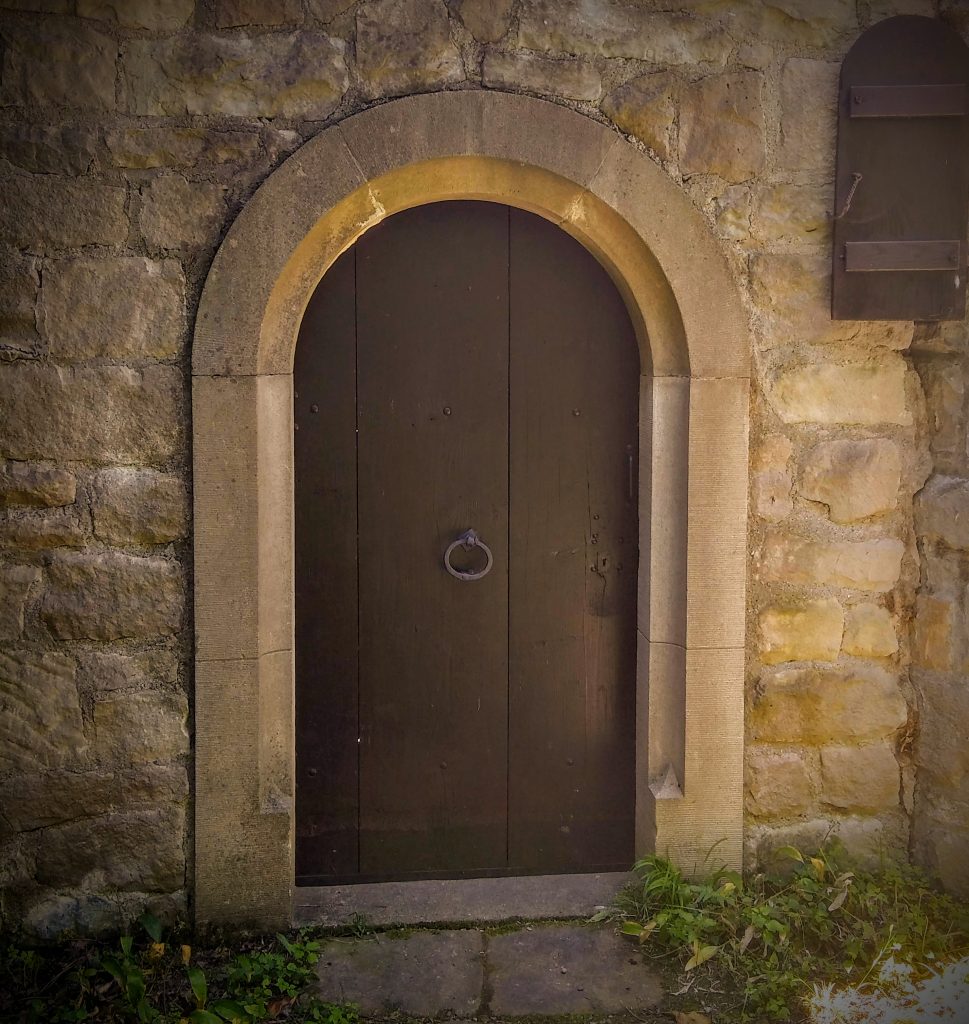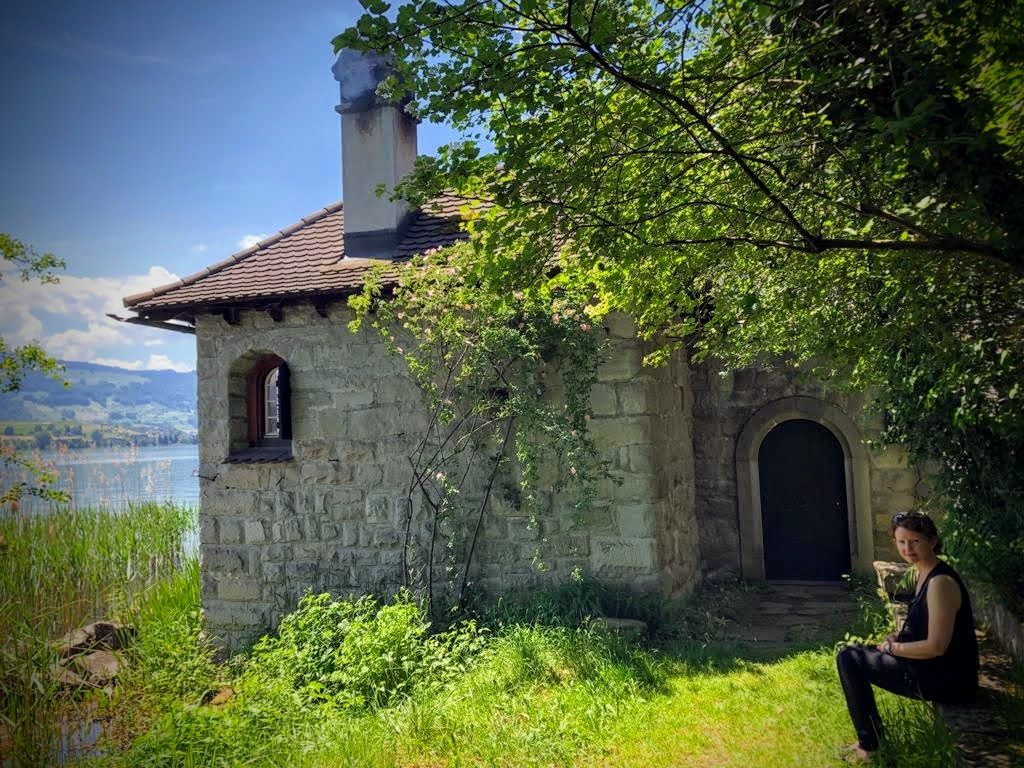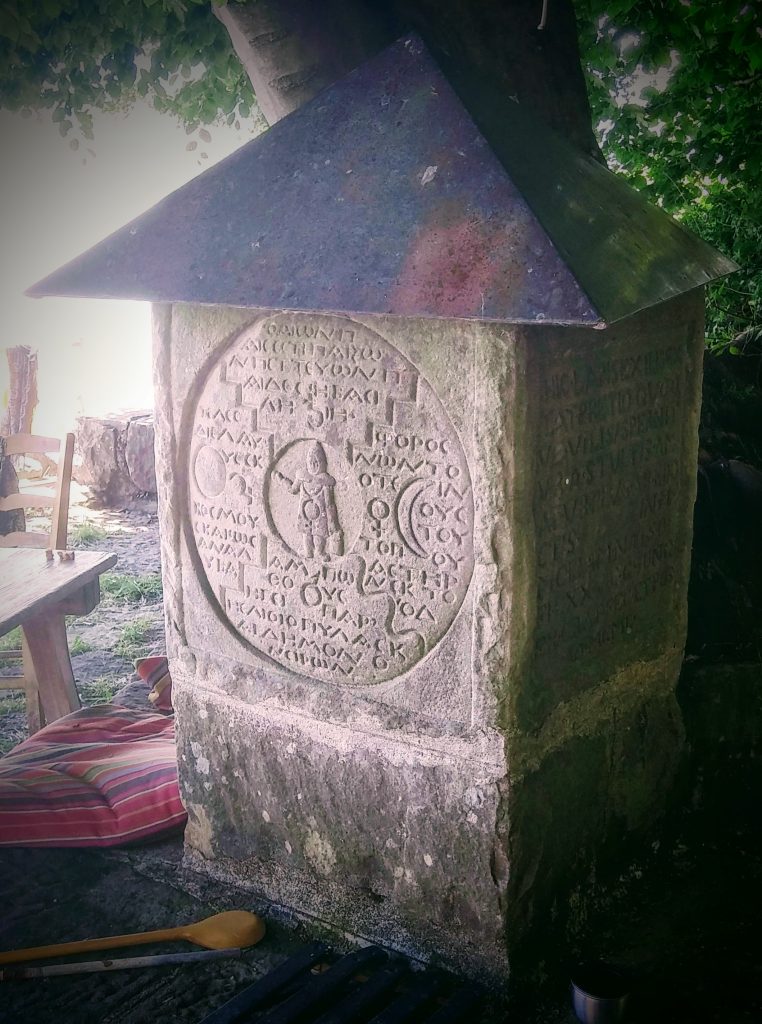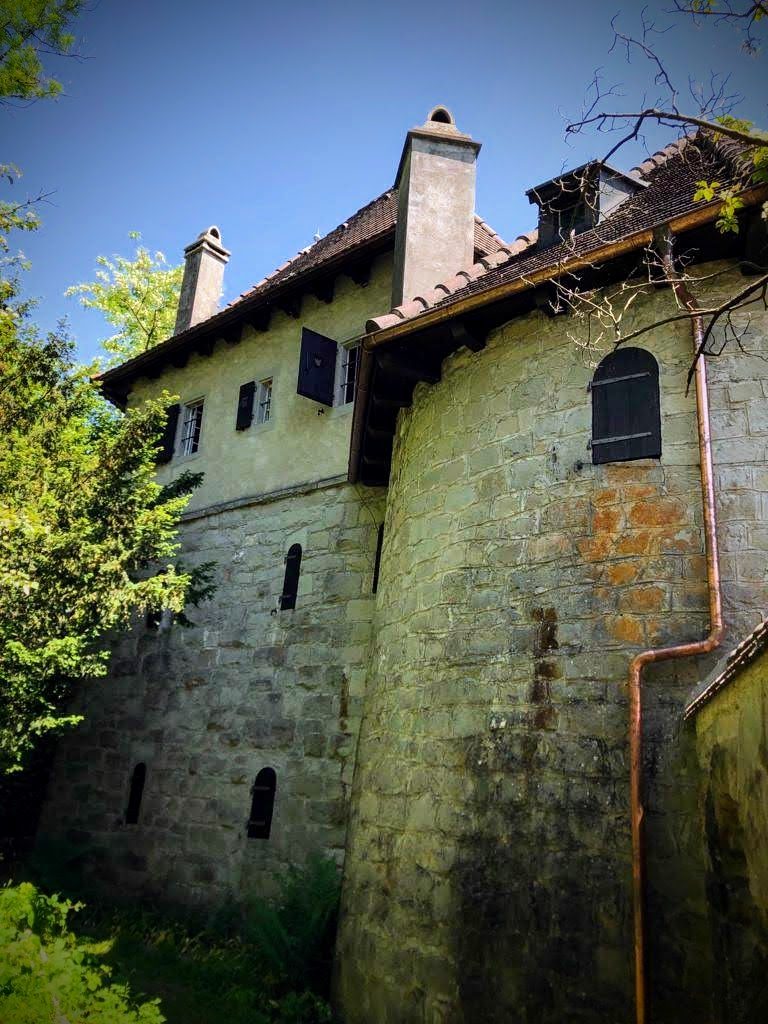You can read about the “Tower House” in Jung’s memoir, “Memories, Dreams, Reflections,” and there are photographs and other images of the house you can call up with the flick of a google search. The house is somewhat of a monument to Jung’s life and work that he built himself, and followers of his work often seek it out as one of the nodes on a kind of pilgrimage.
I wasn’t sure what to expect prior to our visit and in planning the road trip with my now Geneva-resident stepdaughter, and I knew only that the house is still owned and used by Jung’s heirs, so it is not open to the public. But I had come to understand from other online accounts that one was free to visit, if only to see the structure from the outside. I presumed it was accessible, any exterior grounds perhaps maintained by the family, or the town of Bollingen. I guess I expected something park-like. The structure is mapped on Google Maps.
Jung began to build the house in 1937, and continued to add on to it over the next few decades. His mother died that same year, and he called his initial effort part of attempt to come to terms with his grief and sense of loss. The Jung family resided in a large house in Zurich, where Jung and his wife, Emma worked and raised their children, and Jung consulted with his patients. The Bollingen house was a work of psyche or soul; a chance to put hands to earth, to work psychological issues through physical and creative pursuit.

The stone house sits only a few hundred feet from a small dirt road, but is completely obscured from view by a thick bundle of tall trees and shrubs. At the entrance from the road is a small metal shed and a gate with a sign that reads, “Private Property – No Trespassing.” We’d driven from Geneva the day before, and the next morning arrived at the Tower, parked and got out of the car and discovered the simple gate latch to be unlocked. I equivocated for about 20 seconds.
My husband, my stepdaughter and her dog stayed behind while I followed the short path to the house on the shore. I passed several bicycles and a large store of cut firewood, and heard the laughter of a child and man off in the trees. The path leads to a heavy, arched door set in a cast concrete surround, then continues around the house to the lake shore and another arched doorway. I came upon a young woman carrying a red plastic bucket full of dishes. She didn’t see me at first, and a little guiltily I turned back. Then I paused for a moment.

I’d come a very long way, and trespassed this far. I would simply explain myself and apologize profusely and repeatedly. (We’d already had cause once on this trip to apologize for trespassing in Scotland, where Michael shot film of an old abandoned estate house that sits on private land. We came upon the owner as we were getting ready to walk back to our car. Owners get to used to this kind of thing as stewards of old structures that pique public curiosity, but it must come as a surprise all the same when they expect they’re alone and then they’re not!)
Resolved, I turned back around and approached the young woman, introducing myself with an apology. She did reiterate that the property was private, but admitted that it often happened that the family received well-meaning visitors while at the stone house. This was, as it happens, Jung’s great-great-granddaughter I was talking to, pleading my case. I let that fact sink in as she very generously offered to show us a bit of the interior of the house. She understood that while the house remains a private family retreat, that it also means a great deal to Jung’s followers, and she felt a responsibility to share it when people go to such lengths to see it.
I went back to the gate to fetch my companions, all of us a little incredulous. Our guide took us through that first big arched doorway into a small courtyard, where lines of laundry were drying in the sun. A raised and covered open room with a fireplace made a respectable dining room. She led us into the kitchen, a round room with windows that by Jung’s design, direct the revolving sunlight onto specific task areas around the room, as there has never been electricity at Bollingen Tower. A tool board stood to the side of the entryway, with outlines drawn around each tool for ease in replacing them by shape. I was for some reason reminded of Julia Child’s kitchen!
Up a stone stairway built away from a rounded wall – stairs that can’t be more than a foot wide – was Jung’s bedroom. A single bed against a wall with a great mandala painted by the doctor. Our guide led us back outside. The house is built right up to the water, making it difficult to stand far enough away from it to see it in its entirety. The best views are ideally from a boat on the lake. Under a tree sits a capstone, initially too big for its original purpose as a piece of the house, it’s now something more symbolic and ornamental, with inscriptions in Latin and Greek from various literary, philosophical and alchemical sources.

Other family members and small children milled about us. A toddler filled a bowl from a spigot for the dog. We chatted a little longer, but I was very conscious of intruding on their idyll, so we thanked them, wished them well and began to make our way back to the car. We took a few phone pictures, preserving the interior privacy, and Michael shot some black and white film of the exterior.
What struck all of us most about this short visit was how profoundly normal, how mundane it felt. I suppose I had anticipated that our visit would be private, quiet. Just the three of us contemplating the exterior stone façade, the details of the craftsmanship there; and that possibly the fact of the encounter with the structure might produce in us a heightened, visceral feeling of presence. That there would be something palpable, some residue left behind of the actual man that might be – I don’t know – transformational. And it was there – in this kind descendent and her family, in their relaxed vacation trappings, in the things of the kitchen, many of which sit exactly as Jung had used and placed them. The blanket and pillow on the small bed upstairs, the piece of rope hanging from the ceiling that you must hold onto to climb those narrow stairs. The picnic table under the tree, and the wild overgrown stand of forest that hides the tower from the road.

I suppose in having done so much reading of and about Jung, long marveling at his extraordinary genius, it was at first startling to be confronted with the force of the physical evidence of his life as a simple man – a father, a householder, a great-great grandfather. The pater familias as it were, there alongside the scholar and the psychologist. In the run-up to our trip as we were deciding how to spend our Swiss days, I decided I could not go to Switzerland and not see the stone house by the lake. I may never know in what profound ways the encounter may have marked me – if at all. We had the good fortune to visit Jung’s house in the circumstances we did: humbled and intimate, rather than herded through with crowds of strangers, subject to someone else’s interpretations and stories. We are fortunate that the world still values, honors and contains such places. That they have not been commercialized and monetized lends them an air of the sacred. May we be inspired to build our own ancestral hearths, as homage to the sacredness of our families and intimates.